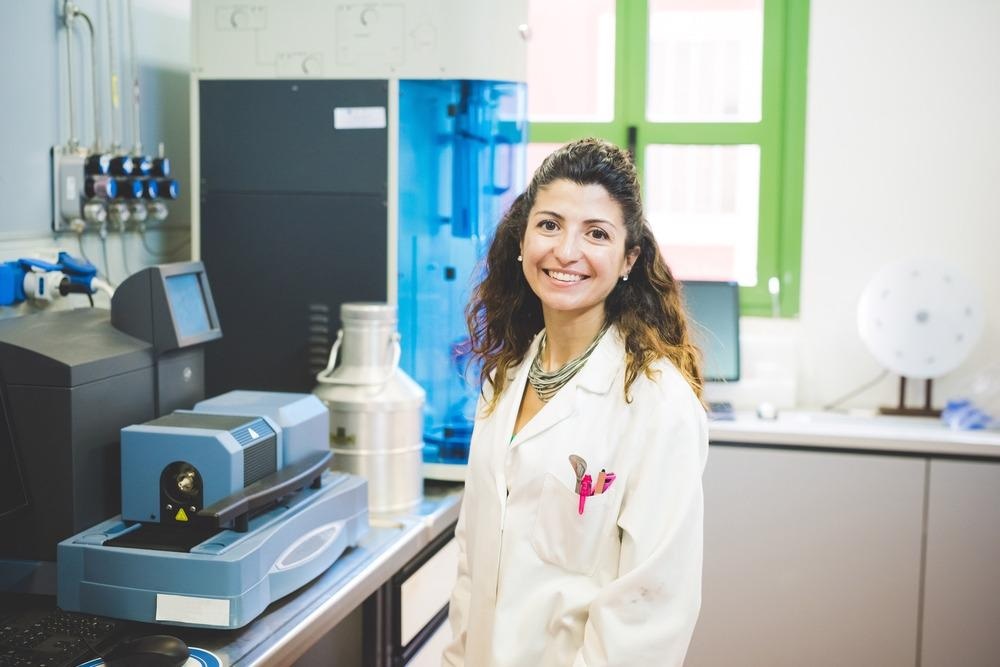This article considers the use of the differential thermal analysis method applied to technical ceramics as well as recent research and developments.

Scientist and Thermogravimetric/Differential Thermal Analyzer. Image Credit: Image Source Trading Ltd/Shutterstock.com
The invention of thermocouples has enabled the development of the differential thermal analysis (DTA) method. DTA has progressed through systematic scientific development, and now researchers use advanced equipment and can perform analysis for distinct types of materials using this method. Moreover, this technique is essential to control the atmospheric composition and pressure of the furnace and analyze the thermodynamics and kinetics of chemical reactions. Although DTA is performed on various materials, the most common application of DTA is in the analysis of technical ceramics.
Thermal Analysis of Materials
Thermal analysis is the study of a change in a material property due to temperature variation. When the material is heated, thermal changes that occur in the material include melting, phase transition, sublimation, and decomposition, which can be studied using thermal analysis methods.
Thermogravimetric (TG) analysis studies material properties during heating in a controlled atmosphere. TG measures mass changes in a material as a function of temperature or time, and its main applications are in thermal stability analysis and composition examination of a material. The properties measured using TG are dehydration, decomposition, desorption, and material oxidation. Several industries and scientists use the DTA method to conduct the TG analysis of materials.
In DTA analysis, the test sample and an inert reference are heated and cooled in identical conditions, and the temperature differences between the two are recorded. The heat flow difference between the reference and sample is calculated by plotting the differential temperature curves and phase diagrams. The curves are plotted, taking time, temperature, and heat flow as variables. As a result, heat absorption or evolution of the sample can be detected with reference to the inert sample.
Studies on phase diagrams, transition temperatures, and qualitative analyses of materials are performed using the DTA method, and it is mainly used for materials such as metals, oxides, salts, ceramics, glasses, minerals, and soils.
DTA Analysis of Ceramics
A DTA curve can be used to analyze structural similarity, which is difficult to study using diffraction experiments. Furthermore, the mass and temperature changes in ceramics can also be studied using DTA curves.
The main advantage of DTA analysis of ceramics is that it can be used in high-temperature analysis using highly sensitive instruments. Moreover, the reaction temperatures of ceramics can be accurately determined using DTA. The limitation is that the difference in temperature of the reference sample and testing sample estimated during the analysis may be inaccurate which affects the main results. Furthermore, the difference between heat variation of the reference samples and the tested sample may also result in errors during the experiment.
Read more on AZoM: The Use of AFM in Archaeology and Paleontology
In the DTA analysis of ceramic material, the shape, temperature, and intensity of the low-temperature endothermic loop of the DTA curve is associated with water loss and mainly dependent on exchange cations. Similarly, the high-temperature exothermic loop is associated with the formation of new compounds and also depends on exchange cations. Additionally, the temperature of the mid-temperature-range endothermic loop is influenced by the partial pressure of water.
Recent Research
In a recent study published in the journal Metals, researchers from China examined the influence of Fe2O3 on the crystallization behavior of glass-ceramics. In the study, the DTA analysis was used to examine the changes in the glass's crystallization temperature and transition temperature with respect to the Fe2O3 volume.
In another study published in the journal Open Ceramics, researchers conducted a study to analyze the effect of boron sources on the thermal behavior of clay-based ceramics. Based on the DTA analysis, the researchers examined the behavior of boron oxide sources as fluxing agents.
Technological Development in DTA
The measurement of the dimensional change of the study material is the most suitable method to examine the sintering process of ceramics, as it directly represents the densification process. However, the traditional thermal analysis techniques such as DTA and TG analysis cannot provide complete information about the sintering rate of the ceramic material.
The dimensional changes can be measured effectively using the double-beam optical dilatometer during the DTA analysis. In a double-beam optical dilatometer, two independent optical systems focus on the edges of the specimen, optimizing the sensitivity and precision of the experiment.
In this process, the changes in the top of the specimen are measured using the first optical path and a stepper motor. The second optical path is focused on the sample holder and serves as a reference beam to compensate for the sample holder's mechanical drift. Hence, this process helps to examine the sintering rate of ceramics effectively.
Conclusions
The above sections elaborate on DTA analysis of technical ceramics and its significance in studying phase diagrams, transition temperatures, and qualitative analyses of materials. They also discuss technological developments in DTA analysis to estimate the sintering rate in ceramics.
References and Further Reading
Rowland, R.A. Differential Thermal Analysis of Clays and Carbonates. Clays Clay Miner. 1, 151–163 (1952). DOI: https://link.springer.com/article/10.1346/CCMN.1952.0010118
Pomeroy, Michael J. "Thermal Analysis Techniques for Technical Ceramics and Glasses." (2021): 676-688. DOI: https://www.sciencedirect.com/science/article/pii/B978012818542100059X?via%3Dihub
Li, X.; Zang, X.; Xing, X.; Li, J.; Ma, Y.; Li, T. Effect of Fe2O3 on the Crystallization Behavior of Glass-Ceramics Produced from Secondary Nickel Slag. Metals 2022, 12, 164. DOI: https://www.mdpi.com/2075-4701/12/1/164
Marí.F. Hernández, P.V. López, Marí.S. Conconi, Nicolá.M. Rendtorff, Effect of boron sources in the thermal behavior of clay-based ceramics, Open Ceramics (2022), DOI: https://www.sciencedirect.com/science/article/pii/S2666539522000104
Optical Non-Contact Measurement for Analyzing Ceramic Material During Rapid Heat Treatments. https://www.azom.com/article.aspx?ArticleID=11524
Disclaimer: The views expressed here are those of the author expressed in their private capacity and do not necessarily represent the views of AZoM.com Limited T/A AZoNetwork the owner and operator of this website. This disclaimer forms part of the Terms and conditions of use of this website.